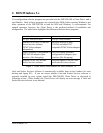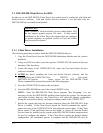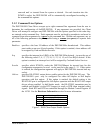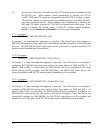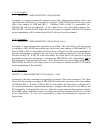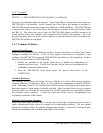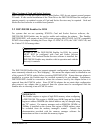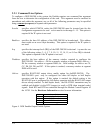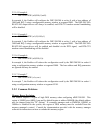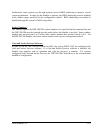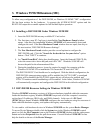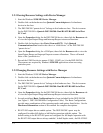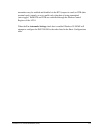
H instructs the enabler to enable the RTS-CTS modem control handshake on the
RS-422/485 port. When modem control handshaking in enabled, the 16C750
UART’s RTS and CTS signals are connected to the RS-422/485 auxiliary channel.
The auxiliary channel may then be used for handshaking between the DSP-200/300’s
RS-422/485 port and a peripheral device. When modem control handshaking is
disabled, the RTS and CTS signals from the 16C750 UART are looped back to each
other. If this option is omitted, the default setting is RTS-CTS modem control
handshake disabled. See the Hardware Information section for more information .
Before removing a DSP-200/300 from its PCMCIA socket, the Enabler should be executed to
free the system resources allocated when the card was installed. For this operation the Enabler
provides on additional command line option:
R instructs the enabler to release the resources previously allocated to the DSP-200/300
. When the 'R' option is used, any settings specified by the 'B', 'I', 'O', and 'H' options
are ignored.
2.2.1.1 Example 1
DSP230EN.EXE
In example 1, no command line argument is specified. The Enabler will report an error and
display the proper usage of the command.
2.2.1.2 Example 2
DSP230EN.EXE (s0,b300,i5)
In example 2, the Enabler will configure the DSP-200/300 in socket 0 with a base address of
300H and IRQ 5 using a configuration memory window at segment D000. The DSP-200/300
unit's RS-422/485 output drivers will always be enabled, and RTS-CTS modem control
handshaking will be disabled.
2
.2.1.3 Example 3
DSP230EN.EXE (i10,h,b340,s1)
In example 3, the Enabler will configure the DSP-200/300 in socket 1 with a base address of
340H and IRQ 10 using a configuration memory window at segment D000. The DSP-200/300's
RS-422/485 output drivers will always be enabled, and RTS-CTS modem control handshaking
will be enabled on the RS-422/485 auxiliary channel.
DOS/Windows 3.x 2-10



